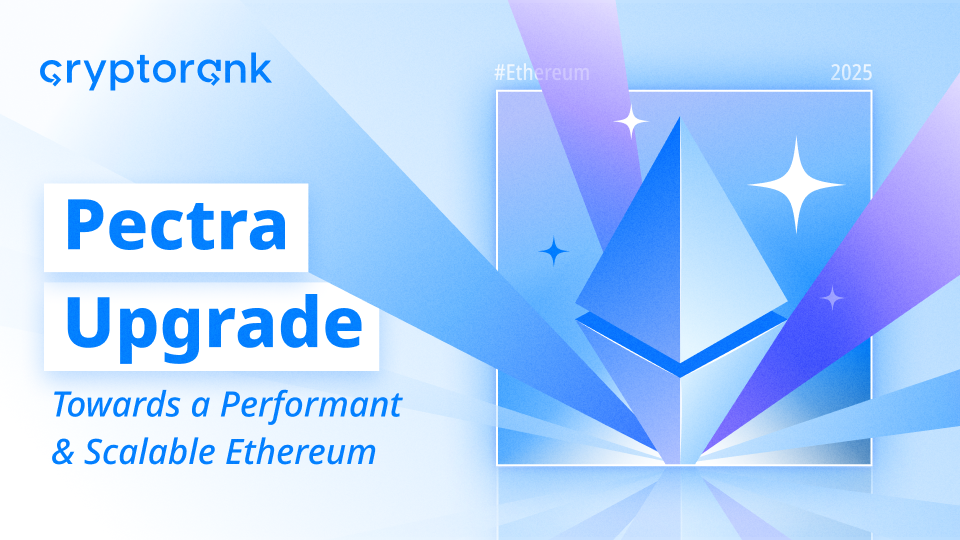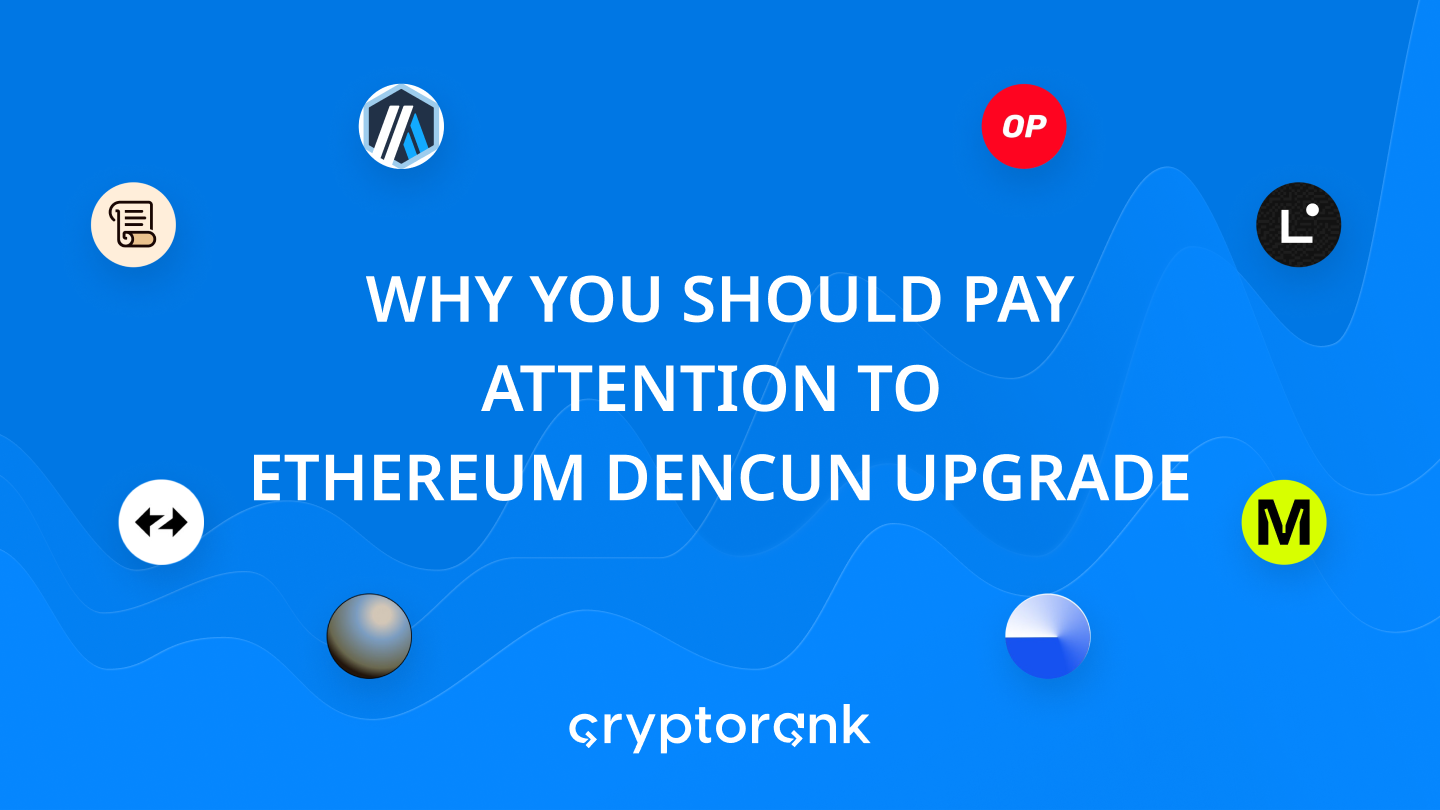Table of Contents
- The Fusion of Prague and Electra
- Prague
- Electra’s Consensus Improvement
- The Prague-Electra Synergy
- Security and Gas Efficiency
- Staking Limits and Transaction Batching
- Securing and Decentralizing Ethereum Through Staking
- Better EVM Efficiency
- Gas Refunds
- Optimized Gas Costs
- Bytecode Improvement
- EVM Object Format
- Code Reduction
- Impact on Network Efficiency and Smart Contract
- Wallet Improvements and User Experience
- Transaction Speed
- Reduced Latency
- Interactivity
- The Challenges and Considerations
- Backward Compatibility
- Testing
- Migration
- Community Engagement and Adoption
- Conclusion
Table of Contents
- The Fusion of Prague and Electra
- Prague
- Electra’s Consensus Improvement
- The Prague-Electra Synergy
- Security and Gas Efficiency
- Staking Limits and Transaction Batching
- Securing and Decentralizing Ethereum Through Staking
- Better EVM Efficiency
- Gas Refunds
- Optimized Gas Costs
- Bytecode Improvement
- EVM Object Format
- Code Reduction
- Impact on Network Efficiency and Smart Contract
- Wallet Improvements and User Experience
- Transaction Speed
- Reduced Latency
- Interactivity
- The Challenges and Considerations
- Backward Compatibility
- Testing
- Migration
- Community Engagement and Adoption
- Conclusion
Pectra Upgrade: Towards a Performant and Scalable Ethereum


Key Highlights
The introduction of EIP-7251 in Pectra will allow validators to stake up to 2048 ETH, a 6300% surge from the current limit of 32 ETH.
Ethereum developers are also exploring other improvements like the introduction of EIP-7022, an upgrade from EIP-3074 that makes accounts on Ethereum work like programmable smart wallets.
Pectra will introduce Peer Data Availability Sampling (PeerDAS) on Ethereum which uses the network’s peer-to-peer component to make data available for rollup solutions.
The rest of this article explores the Pectra upgrade in more detail.
The Fusion of Prague and Electra
The perfect fusion of two upgrades on Ethereum—the Prague upgrade and the Electra upgrade are the combined forces leading to the Pectra upgrade.
Prague
The Prague update released in 2024 optimized contract execution and gas cost. EIP-2929, a development from the Prague update made it more affordable to create smart contracts. EIP-2930, a new transaction type enabled multiple transaction batching for better scalability.
Electra’s Consensus Improvement
Electra was released alongside Prague to improve Ethereum’s consensus layer. Its EIP-4569 introduced a hybrid PoW/PoS mechanism for improved security while enabling more stakers to participate. The shift complements Ethereum’s long-term transition to proof-of-work.
The Prague-Electra Synergy
Pectra is based on the developments following the Prague and Electra upgrades in the following ways.
Security and Gas Efficiency
The fusion of Prague’s gas optimization improvements with Electra’s consensus enhancement results in a balance. Low gas fees make Ethereum a preferred blockchain, while a hybrid consensus model strengthens the network’s security.
Staking Limits and Transaction Batching
While Electra increases the staking limit, thanks to EIP-7251, Prague’s transaction batching capabilities complement it by helping the network adapt to rapidly growing demands and high traffic.
Prague and Electra contribute to Ethereum’s evolution by paving the way for DApps and DeFi projects to grow without exorbitant fees. Electra’s hybrid PoW/PoS consensus model laid the groundwork for Ethereum 2.0. The combined effect of these upgrades is evident in developer-friendly features like account abstraction compatibility and improved wallet interactions.
Securing and Decentralizing Ethereum Through Staking
The improved staking limits occasioned by the Pectra upgrade will encourage existing validators to get more skin in the game while creating an opportunity for new entrants. As mentioned before, extending the staking limit from 32 ETH to 2,048 ETH will be a massive surge. Consequently, the rise in validator commitment will align their incentive towards network security. Committed validators reduce occurrences of attacks or malicious behavior as the cost will be too high to pay. Larger stakes also promote decentralization as a broad range of participants including smaller validators can participate to foster a healthy distribution of power. There will also be competition among validators who must decide between increasing their stake or losing ground to new entrants ready to seize the opportunity.
Better EVM Efficiency
The Pectra upgrade enables efficient smart contract execution and improves Ethereum’s overall network performance. Here are some points in this regard:
Gas Refunds
EIP-3529 upgrade will optimize gas refunds for contract self-destruct. Refunds before Pectra that are capped at 15,000 will now scale linearly with the remaining gas in the transaction. Linear scaling improves smart contract management while reducing overall transaction costs.
Optimized Gas Costs
EIP-3198 modifies the gas cost for specific EVM operations. The cost of state storage operations—SSTORE—for example, is being adjusted to reflect their impact on Ethereum. The adjustment will balance developer incentives and stabilize the network.
Bytecode Improvement
EVM Object Format
Pectra introduces a standardized format for EVM bytecode known as EVM Object Format (EOF). It simplifies contract deployment and execution through consistent representation. Through this, developers can optimize bytecode to execute contracts faster.
Code Reduction
EIP-3540 introduces a new opcode—EXTCODEHASH—which lets contracts refer to external code without including the code. The opcode improves overall network efficiency by reducing onchain storage.
Impact on Network Efficiency and Smart Contract
Smart contracts execute more efficiently with optimized gas costs and bytecode improvements. As a result, users enjoy faster transaction confirmations on NFT marketplaces and complex DeFi protocols. The reduced gas fees help developers deploy cost-effective contracts, while users pay for interacting with the network. Since efficient EVM execution makes Ethereum more scalable, the Pectra upgrade will make Ethereum more responsive and capable of unprecedented network demands.
Wallet Improvements and User Experience
Beyond technical innovations, Pectra will impact user experience on Ethereum wallets. Here are some key improvements developers, users, and dApps can expect:
Transaction Speed
Transactions will be verified faster on Ethereum with optimized EVM transactions and reduced gas costs. Pectra will offer a more responsive experience while swapping, minting, or interacting with DeFi protocols. Developers also enjoy faster transaction processing with smoother interactions from wallet integrations, increasing the adoption and usage of their dApp.
Reduced Latency
Transaction delays will be down significantly post-Pectra upgrade. Waiting for transactions to be confirmed can be quite frustrating. Pectra’s bytecode adjustments and gas cost optimization reduce confirmation time. Low latency also improves the responsiveness of dApps that rely on real-time data.
Interactivity
Managing crypto assets, voting, and interacting on DeFi applications will become more intuitive post-Pectra. Users will experience fewer hiccups and smoother flows thanks to standardized EVM bytecode EOF which optimizes the interface for smoother interaction.
The Challenges and Considerations
Despite the advantages of Pectra, some drawbacks will come with significant protocol improvements. They include:
Backward Compatibility
Updates must be compatible with existing smart contracts deployed on Ethereum as incompatibilities could disrupt the system. Rigorous testing and communication with developers are therefore crucial. They must know the deprecated features and tweak their codes accordingly.
Testing
Thorough testing will be necessary to avoid unexpected consequences. Critical upgrades like Pectra must be properly tested and evaluated. Multiple testnets, audits, and community involvement ensure stable releases.
Migration
Contract data migration post-upgrade can get complicated. Guides, toolings, and developer incentives will be crucial for a smooth transition.
Balancing innovation and stability while getting and implementing feedback from the community could mean a gradual evolution, where challenges are addressed decisively to ensure a performant and scalable Ethereum.
Community Engagement and Adoption
The larger Ethereum community will play a crucial role in the success of the Pectra upgrade. Here is how each part of the community can contribute:
Developers will be at the heart of this monumental change, educating other developers through forums, social media, and content clarifying complex aspects of the upgrade. They will also play a significant role in encouraging other developers to explore, test, and contribute to the upgrade. Feedback from their test will reveal anomalies and ensure a stable release. Developers can also participate in bug bounties to find any backdoors occasioned by the upgrade.
Next in line are validators who must learn to adapt and educate other validators about the best practices for a smooth transition. Lastly, users and enthusiasts must be aware of the changes occasioned by Pectra to drive growth through word of mouth and educational content.
Conclusion
By combining the best of previous Electra and Prague upgrades, the Pectra upgrade will be a pivotal move for Ethereum. With features like optimized EVM efficiency, increased validator stake limits, and improved user experience, Ethereum is positioned for growth. When released in 2025, the user-centric improvements of the Pectra upgrade will pave the way for an accessible, efficient, and scalable Ethereum. Nevertheless, this doesn’t come without crucial challenges. Developers, validators, and users all have a part to play in ensuring a stable release while keeping the unexpected under control.
Disclaimer: This post was independently created by the author(s) for general informational purposes and does not necessarily reflect the views of ChainRank Analytics OÜ. The author(s) may hold cryptocurrencies mentioned in this report. This post is not investment advice. Conduct your own research and consult an independent financial, tax, or legal advisor before making any investment decisions. The information here does not constitute an offer or solicitation to buy or sell any financial instrument or participate in any trading strategy. Past performance is no guarantee of future results. Without the prior written consent of CryptoRank, no part of this report may be copied, photocopied, reproduced or redistributed in any form or by any means.
Read More

Why You Should Pay Attention to Ethereum Dencun Update
Table of Contents
- The Fusion of Prague and Electra
- Prague
- Electra’s Consensus Improvement
- The Prague-Electra Synergy
- Security and Gas Efficiency
- Staking Limits and Transaction Batching
- Securing and Decentralizing Ethereum Through Staking
- Better EVM Efficiency
- Gas Refunds
- Optimized Gas Costs
- Bytecode Improvement
- EVM Object Format
- Code Reduction
- Impact on Network Efficiency and Smart Contract
- Wallet Improvements and User Experience
- Transaction Speed
- Reduced Latency
- Interactivity
- The Challenges and Considerations
- Backward Compatibility
- Testing
- Migration
- Community Engagement and Adoption
- Conclusion
Table of Contents
- The Fusion of Prague and Electra
- Prague
- Electra’s Consensus Improvement
- The Prague-Electra Synergy
- Security and Gas Efficiency
- Staking Limits and Transaction Batching
- Securing and Decentralizing Ethereum Through Staking
- Better EVM Efficiency
- Gas Refunds
- Optimized Gas Costs
- Bytecode Improvement
- EVM Object Format
- Code Reduction
- Impact on Network Efficiency and Smart Contract
- Wallet Improvements and User Experience
- Transaction Speed
- Reduced Latency
- Interactivity
- The Challenges and Considerations
- Backward Compatibility
- Testing
- Migration
- Community Engagement and Adoption
- Conclusion